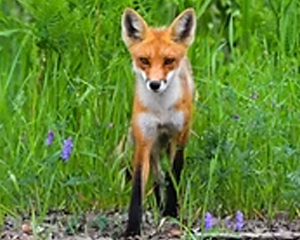Red Fox - Commonly Trapped Furbearer
UTILIZING OUR ABUNDANT MISSOURI WILDLIFE

Red Fox
Fast Facts
- Weight: ~10-12 pounds (typical adult)
- Teeth: 42
- Mating Season: January
- Litter Size: ~6-8 pups
- Top Speed: Up to ~45 mph
- Life Span: ~12 years
- Note: Highly adaptable to many climates
- Tail Tip: White-tipped tail common
The red fox is easily recognized by its red fur, white-tipped tail, black feet, and black-furred ears. Native to North America, they occupy many habitats including farmlands and suburban edges, and are among the most clever and adaptable of wild canids. :contentReference[oaicite:9]{index=9}
Description
Red foxes generally weigh 10-12 lbs; northern and better habitats may produce up to ~14 lbs. Distinctive features: black feet, black on ears, white-tipped tail, and color phases (red, black, silver, cross) occur in some populations. They have 42 teeth including 4 canine teeth. :contentReference[oaicite:10]{index=10}
Reproduction
Fox pairs typically mate in December or January. Gestation is approximately 52-53 days, with litters born mid-March. Each may include around 6-8 pups. Both parents often feed the young after the first week. :contentReference[oaicite:11]{index=11}
Habits
Red foxes are mostly nocturnal but may be active in twilight. They prefer open areas and rest during day in elevated spots. They’re curious and intelligent, often exploring new territory or investigating traps. They can run at high speed to escape predators. They consume a wide range of food: small mammals, insects, fruits, and sometimes poultry. :contentReference[oaicite:12]{index=12}
Range
Red foxes occur in nearly every U.S. state except Hawaii; they adapt well to farmland, wooded edges, and suburban areas. :contentReference[oaicite:13]{index=13}
General / Management Notes
As predators of small mammals and birds, red foxes help control prey populations but may be nuisance predators around poultry and nests. They are susceptible to rabies and require careful management where human-wildlife conflict exists. :contentReference[oaicite:14]{index=14}
Contact Missouri Trappers Association
Get in touch with the Missouri Trappers Association by filling out the contact form. We appreciate your support!
For questions regarding your membership, please call
Joslyn Search: (660)292-1911


